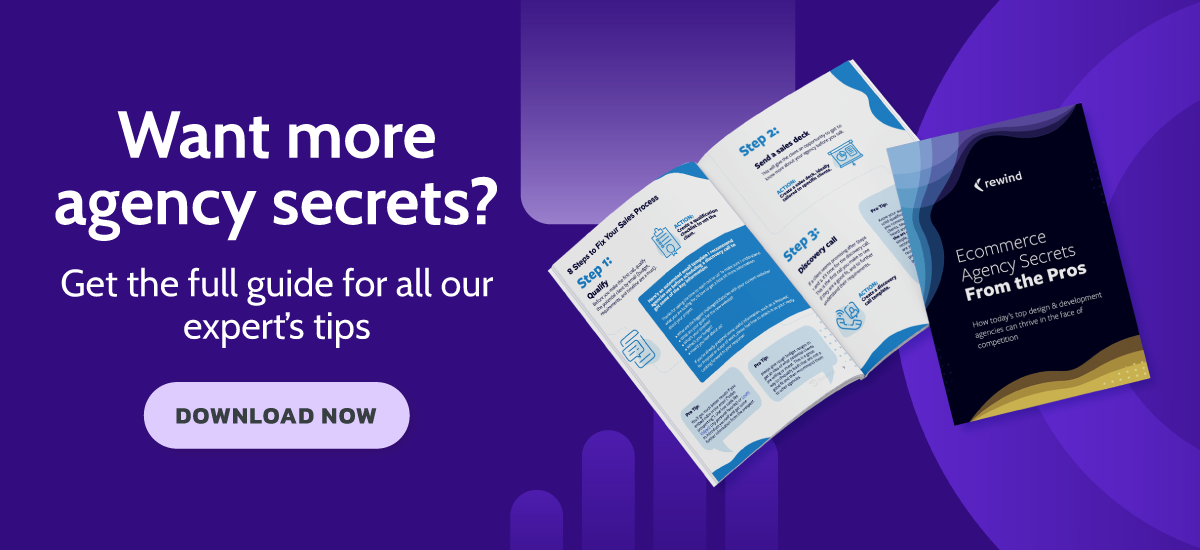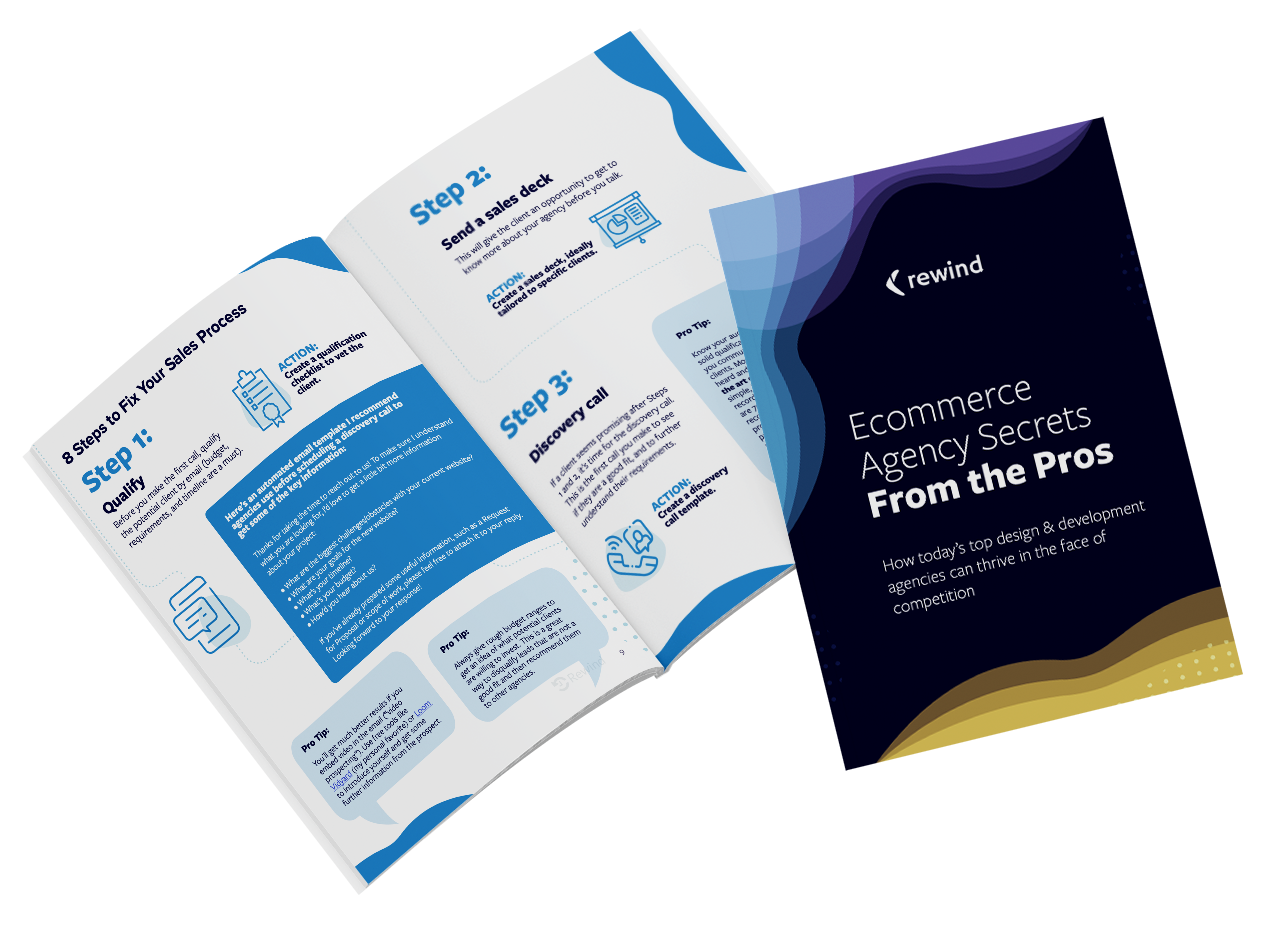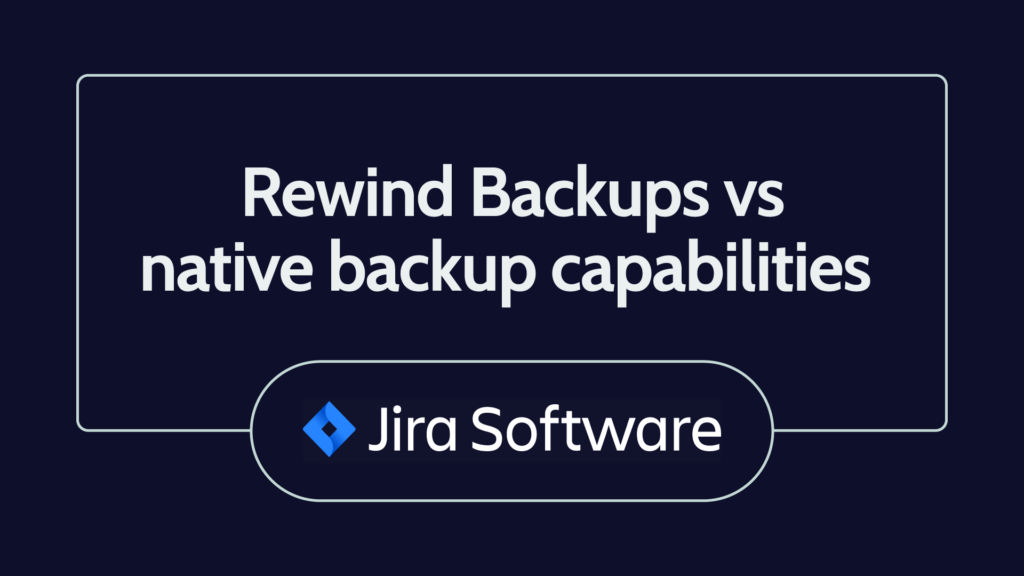If you had to name the biggest challenges to your ecommerce design or development business, what would they be?
If you’re like most other agencies out there, you’re going to say something like “Clients who keep expanding the scope of work beyond what we agreed on!” Or, “Prospects that let me spend hours on a proposal and then shop it around, or ghost me just before signing.” Maybe you’ll point to customers that want big services on a small budget. In other words, people that may mean well, but end up stringing you along, eating your time, and eroding your profits.
Rachel Jacobs, founder of Ecommerce Partnerships, shares top tips for revamping your sales process, screening out poor prospects, and pumping up your conversion rate.
Stop Scope Creep Before You Sign
I used to think there were good clients and bad clients. I now understand that nine times out of ten, it’s not bad clients but a bad client qualification process that drags an ecommerce agency down. This doesn’t mean there aren’t bad projects, it just means that a bad project usually starts from sales. The good news? If you can get the sales process right, you’ll save your agency a ton of money and your team hours of heartache and stress!
I’ve worked directly with over 20 ecommerce agencies in the last year alone and advised hundreds more. I hear the same sales challenges over and over—there are not enough leads, prospects have ghosted us, clients don’t have the budget. And then there’s the main threat to agency profitability: scope creep.
Sales is actually a huge sticking point for agencies that don’t have a documented sales process. Many agency owners are so bogged down with the day-to-day business that they have no time to effectively grow their agency.
Weed Out Bad Prospects With a Brilliant Sales Process
Most agencies are so eager to get contracts signed, it’s often at the expense of due diligence and, more importantly, profit.
And yet, the number one cause of scope creep (which chips away at your profits) is a poor sales process. It’s almost impossible to deliver a profitable project when it’s been undersold in the first place. Before anyone signs on the dotted line, you first need to weed out the clients that aren’t a good fit. To do that, you need a well-designed sales process.
8 Steps to Fix Your Sales Process
- Qualify – Before you make the first call, qualify the potential client by email. Essential information includes budget, requirements, and timeline.
- Send a Sales Deck – A good sales deck will give the client the opportunity to get to know more about your agency before you talk. Ideally, each sales deck is tailored to specific clients.
- Discovery Call – If a client seems promising after Steps 1 and 2, it’s time for the discovery call. This is the first call you make to see if they are a good fit, and to further understand their requirements.
- Outline the Solution – During the discovery call, when you have a better idea of client requirements, it’s time to outline your solution. This is also a good time to further qualify their budget.
- Set up the Proposal Call – At the end of the first call, book your next call, specifically to run through the proposal.
- Prepare for Objections – On the proposal call, you’ll have the opportunity to handle and objections in real-time. Consider the questions or objections you get asked on a regular basis and make sure you include those in your solution so you answer any questions before a prospect has time to even think about objections.
- Proposal Call – This is your second call, where you run through the proposal with the client to explain your solution. Never email proposals – always explain them in person you can handle objections and questions in real-time.
- Send the Proposal with Contract – After the client has agreed to the proposal, send it along with a contract section immediately after to get a signature.

Save Time and Boost Conversion Rates with Killer Proposals
Winning more business isn’t just about having the right pricing. It’s about getting your prospect to want to work with you. It’s making them realize that with your agency as Alfred, they get to be Batman!
In order to get them to believe that, you need a proposal that knocks it out of the park.
But how do you do that? I like to think of a business proposal like a phone number—you have to have all the digits in the right order to get the desired result.
I recommended creating a master template and making it as comprehensive as possible. My own proposal template, which I’m going to share with you here, may seem detailed, but it will save you precious time in the long run. Each time you create a new proposal using the template, you can just delete the irrelevant pieces and do a quick search-and-replace for the customizable sections. When you get really efficient at creating proposals, you’ll spend no more than 15 minutes per proposal.
You can use the time you save for what’s really important — growing your business.
Your Ultimate Proposal Template
Most agency proposals start out touting their own credentials and success stories. Resist this temptation! Remember, it’s not about you and you’re not the hero of this story (you’re Alfred, after all). When you’re walking a prospect through a proposal, all they care about is themselves, their problem, and how it’s going to be solved.
You need to develop a crystal-clear plan that defines expectations on both sides. Something like: “This is exactly what we are promising you and this is exactly how we will do it.” After you’ve presented the deliverables, essentially justifying your pricing before you present it, present the pricing and let the prospect respond first.
- Cover Letter: Don’t just dive right into the strategy and the tactics. Set expectations up front and entice the client to read more. Think of the opening of your proposal or RFP response as the cover letter of a job application. You want this company to hire your team, but they need a more digestible summary of what you’ll offer them and why you think they’ll benefit from working with you. This cover letter tells them who you are before they read about the services you offer. It also gives you the opportunity to remind them that they solicited the proposal they’re about to read.
- Executive Summary: The executive summary shouldn’t just summarize what the proposal says, it should state what the prospect wants, where they want to go, and what they will need to get there. You should also cover the research you did and the steps you took to pull together your recommendations. This document shows why the client should select your firm. State two obvious facts about the requester or the requester’s needs upfront. These should be things that the client knows are true. By doing this first, the reader will be more receptive to the remaining points. This helps you present the information in a way that prevents the client from becoming defensive when reading your recommendations.
- List of Deliverables and Services: This is the heart of your proposal document. Categorize the proposal into different sections, such as creative, technology, etc. This will make it easy for the prospect to understand the different parts of the proposal and the different activities you recommend. In each section, you should list out the specific deliverables and also indicate what is not included. This last part helps to prevent scope creep from the beginning, and it also provides an upsell opportunity for clients who may want more. Don’t include pricing in this section. It will stop people from absorbing the information, and getting excited about the work you can do together. Instead, they’ll just be thinking about dollar signs and comparing your pricing to another firm’s price, regardless of what the solution you are recommending actually includes.
- Project Summary and Pricing: Add an itemized list with a price for each of the deliverables. This isn’t designed to give your client the option to cherry-pick. Avoid asking clients to choose between too many different options. Provide a solid plan of what needs to be done, and what it will cost.
- Project Timeline: Present the timeline for the project.
- About Us: Save this part until the end. Honestly, the client won’t care about you until they know what you can do for them and their company!
- Contract Section: Include an agreement or contract in the proposal so that the client can sign as soon as possible. Don’t make them ask you: where do I sign? Clients often go directly to the agreement or contract section of your proposal, so make sure it’s clearly labeled and the signature lines are visible at the bottom.
Upfront and In-Person (or Zoom)
If you are at the proposal stage with a prospect, make them aware upfront that your policy is to present the proposal in person, via phone, or via video conference. Why? Because presenting either in person or by video call allows you to explain the finer details, demonstrate your knowledge of project scope, and outline your strategy for helping the client overcome their problems, issues, and challenges.
It also provides you with the opportunity to overcome any objections that may arise along the way. You must be willing to walk away from anyone who won’t agree to this term because chances are if they won’t make time to meet with you, they’re not serious about working with you anyway.
3 Simple Questions to See if You’re Wasting Your Time
Let’s look at one of the most common objections you’ll hear from a prospect: “Send me more information”. When your prospect says something like this, it means one of two things. Either something is missing, or you’re wasting your time. These three simple questions will tell you if you need to help your prospect overcome a hang-up, or if you’re just wasting your time:
- What information would you like me to send you?
- When would you like me to send the information?
- Why do you need this additional information?
If someone is wasting your time, they won’t have good answers to these questions and they’ll give you a generic response. But a good prospect—one who is genuinely interested in working with your agency—will request a very specific piece of information, and give you a timeline and a reason.
That’s how you’ll see if they’re the real deal and whether they’re worth your time. If this is still a legitimate prospect, agree to send the information and make sure to set up the next meeting right then and there.
More Agency Secrets from the Pros
Looking for more insider advice on how not to work for free, understanding your customer’s needs, how to determine a client’s potential budget before you even call, and Jacobs’ self-described “killer callback strategy?”
We rounded up the best Ecommerce agencies in the business to share their tips, tricks, and templates. Then, we put them all in a handy PDF guide, just for you.




